We hear much about the impact of culture in organizations. We have likely had experiences working in environments that exhibit a positive culture, and also may have had less fortunate experiences in not-so-positive ones. Both types of organizations share one thing – a consistent way of being that is ever-present.
Let’s start with a definition of culture. In its broadest sense, culture is that intangible thing that evidences the beliefs, customs, thinking and behaving of an organization. Culture is that underlying thing that determines how individuals act and interact with one another. It’s not necessarily about what individuals say publicly in a meeting that reflects the culture. It is rather about the conversations taking place at the water cooler or in the employee lounge. To understand the culture of an organization is to know its strengths and even its relative weaknesses.
Anthropologists examine artifacts to piece together the culture of civilizations that lived centuries ago. They strive to answer questions such as: How did they live? What were they like? What motivated them? What were their priorities? Just as anthropologists study cultures of ancient civilizations, we can study the culture of an organization. Determining what makes that organization “tick” will reveal whether or not the work environment and relationships are constructive or non-constructive. This information will enable us to make adjustments or corrections to the way things work for improved employee satisfaction and maximized performance.
So what does this all mean for education? Whether it’s K-12 or in higher education, culture in a school can be translated as “how we do things around here.” Is there mutual respect and support? Does the atmosphere foster collegiality? Are teachers and staff motivated and empowered to helpallstudents to succeed? Travel from one school to another and you canfeelthe culture as you step foot into the front office. Are you greeted in a welcoming manner? Do you sense that staff is on the same page? Is there an atmosphere of high expectations and efficacy?
The Pacific Institute (TPI) has spent over 40 years examining the role of culture in all types of organizations including education. Through its Cultural Alignment process and cognitive psychology based curriculum, administrators, teachers and staff have been able to progress from what is considered a defensive or non-adaptive culture to a constructive, positive one. This positive shift has been demonstrated at a number of educational institutions around the globe.
Culture in education does matter. In fact, it matters more than standardized test scores, graduation rates and student and teacher retention. This is so because a positive culture brings about the desired results, by its very nature.
Featured posts
May 16, 2023
May 16, 2023
May 16, 2023





